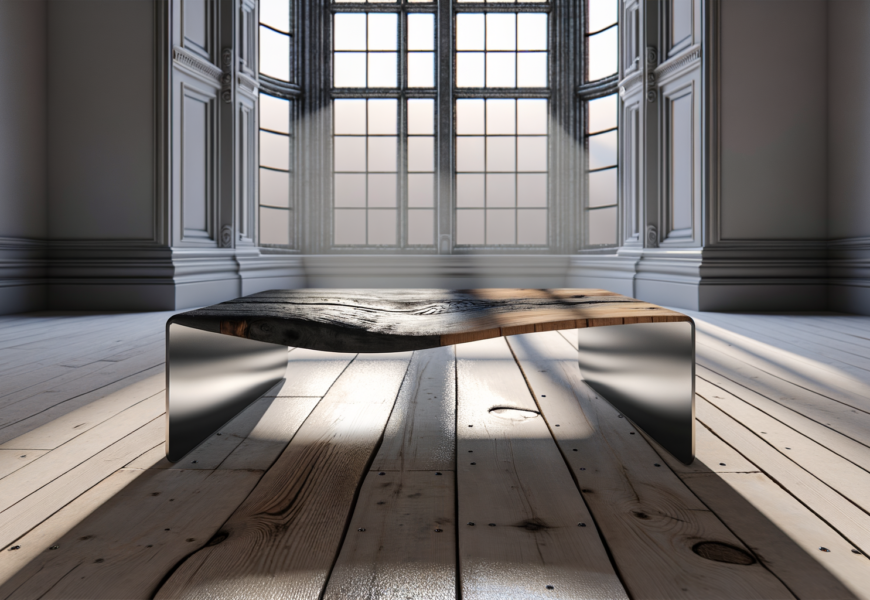Exploring the Fascinating History of Coffee Tables in 2024
Coffee tables have played a pivotal role in home decor for centuries, standing at the intersection of functionality and design. More than just a platform for cups of coffee, these tables have become symbolic, encapsulating shifts in cultural trends, technological advancements, and aesthetic ideals. In this exploration, we trace the evolution of coffee tables and examine today's design trends as we venture into 2024.
The Origins of Coffee Tables
The journey of coffee tables began in 17th-century Europe. These early tables were inspired by the burgeoning coffee culture fostered by coffee houses that dotted the urban landscapes. Initially, coffee tables were nothing more than small wooden stands, designed to accommodate the social rituals associated with coffee drinking. Made from local woods and crafted with simplistic designs, these tables were more utilitarian than decorative.
Coffee houses played a significant role in popularizing coffee tables, as they became social hubs where people gathered to discuss politics, culture, and business over coffee. Thus, the coffee table was born out of a need to support these communal gatherings, subtly altering the dynamics of social interactions.
Evolution Through the Ages
As time progressed, so did the design of coffee tables. The Victorian era witnessed a transformation with a penchant for elaborate designs, embracing opulent materials like marble and gilded accents. This period saw an infusion of intricate carvings and ornate styles, a dramatic departure from their humble beginnings.
In the early 20th century, the Art Deco movement introduced clean lines and geometric forms, a hallmark of modern living room trends. This artistic wave embraced bold materials and patterns, merging elegance with functionality. Post-war innovations further revolutionized coffee tables, giving rise to mid-century modern designs characterized by sleek forms and innovative materials like metal and glass, marking a significant pivot in furniture history.
Cultural Significance in Different Regions
The narrative of coffee tables is as diverse as the cultures that embraced them. In Eastern cultures, they often served as lower, multifunctional pieces reflecting a lifestyle centered around floor seating. Japanese tables, for instance, were closer to the ground and used not only for dining but as platforms for various household activities, showcasing the minimalist home decor style.
Conversely, in Western societies, coffee tables became larger and more ornate, an aesthetic evolution aligned with the grandeur of European living spaces. In societies across the world, coffee tables held symbolic meanings, often considered as the centerpiece that harmonizes the entire living room.
Regional craftsmanship highlighted distinct design philosophies, with local artisans incorporating native motifs and materials, thus enriching the coffee table's global tapestry.
Contemporary Designs and Trends in 2024
Fast forward to 2024, the design ethos of coffee tables is continually evolving. Minimalism has significantly influenced modern aesthetics, favoring clean, unfussy lines and neutral color palettes. Coffee tables today often prioritize simplicity and functionality, reflecting broader trends in contemporary furniture designs.
Multifunctional pieces are on the rise, serving as storage units, bookshelves, or even work desks. This flexibility caters to the burgeoning need for space-efficient furniture, aligning with current consumer preferences. An increased emphasis on sustainable furniture has propelled the use of eco-friendly materials, such as reclaimed wood and recycled metals, highlighting a shift towards environmentally conscious production.
The Role of Technology in Shaping Coffee Tables
Technology has made surprising inroads into the realm of coffee tables. The era of smart furniture introduces innovative solutions like built-in wireless charging and smart surfaces that can display digital interfaces. As homes become smarter, so too do the furnishings, incorporating seamless technological integration.
These advancements forecast an exciting future for furniture craftsmanship, suggesting further possibilities in design personalization and functionality enhancements. Coffee tables, once merely passive household items, are transforming into interactive units that adapt to modern technological trends.
Choosing the Perfect Coffee Table for Your Home
Selecting an ideal coffee table involves more than aesthetics; it demands a consideration of size, style, and functionality to ensure cohesion with existing decor. A well-chosen piece can serve as a living room centerpiece, anchoring the space and reflecting the homeowner’s taste.
When embarking on this purchasing journey, understanding current home decor trends can guide you toward a table that fits not only your practical needs but also aligns with your personal style. In 2024, consumers lean towards designs that offer versatility and durability, with a renewed focus on quality and craftsmanship.
Conclusion
Reflecting on the history and evolving nature of coffee tables reveals their integral role in our living environments. Beyond their functional utility, they symbolize broader social changes and technological advancements. As we look to 2024 and beyond, coffee tables continue to adapt, offering homeowners both beauty and utility. Whether you are a design enthusiast or seeking the ideal centerpiece, understanding the historical context enriches its presence in your space. We invite you to share your preferences or discoveries in the comments below, engaging with this ongoing narrative of style and innovation.









